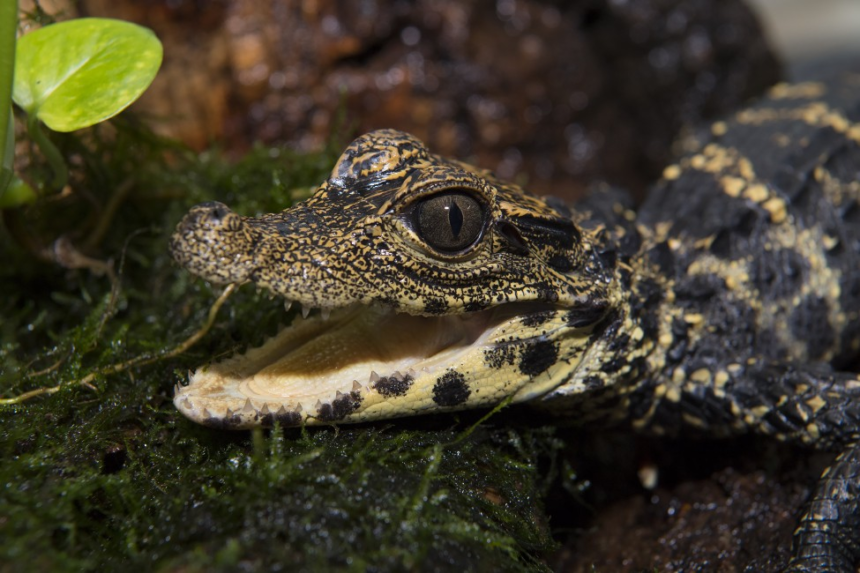The smallest crocodile in the world, the dwarf crocodile lives in freshwater streams and swamps in western and central Africa. The species can reach a maximum weight of 45.4 kg (100 pounds) and a maximum length of 1.8 meters (5.9 feet).
The dwarf crocodile : Introduction
The dwarf crocodile (Osteolaemus tetraspis) stands out as a fascinating reptilian marvel, claiming the title of the world’s smallest living crocodile species. Measuring up to a maximum length of 1.8 meters (5.9 feet) and weighing in at a maximum of 45.4 kg (100 pounds), these diminutive creatures are native to the swamps and small freshwater streams of sub-Saharan western and central Africa. However, despite their small size, the dwarf crocodile faces significant threats, leading to its classification as a vulnerable species by the International Union for Conservation of Nature and Natural Resources (IUCN).
ALSO READ : The World’s Most Dangerous Fish : A Comprehensive Guide
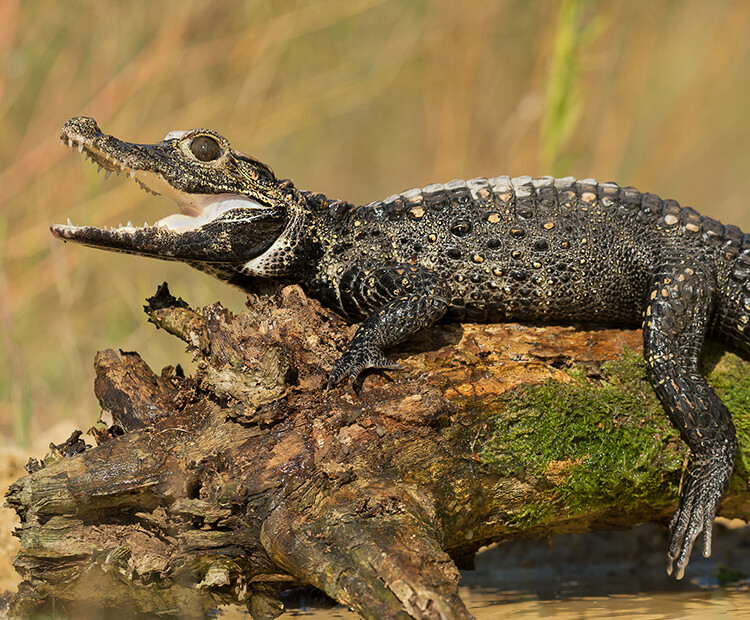
Natural history
Dwarf crocodiles are renowned not only for their petite stature but also for their distinctive dark coloration. Adult individuals sport a predominantly charcoal-colored head, tail, and top and sides of the body, while the underside exhibits a contrasting light yellow hue. Like other crocodile species, their hides are covered with thick scales made of keratin. Juvenile dwarf crocodiles share a similar dark coloration with yellow bands on the top and sides of their bodies. Additionally, these crocodiles display sexual dimorphism, with males typically being heavier than females.
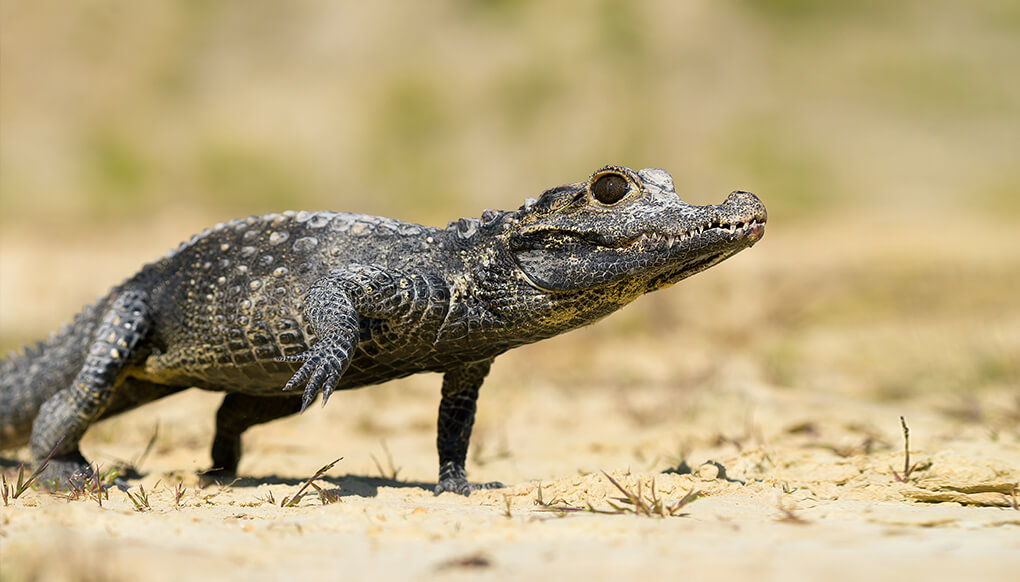
Habit and behavior
Primarily nocturnal hunters, dwarf crocodiles forage for prey on land, with a diet comprising mainly invertebrates such as beetles, insects, millipedes, and occasionally small mammals and amphibians. During the day, they rest in the water, where they may consume fishes, insect larvae, and other small animals. Despite their small size, dwarf crocodiles face predation from larger vertebrates such as mongooses, genets, herons, monitor lizards, and even other crocodiles. Interestingly, some individuals have been observed displaying an unusual behavior – climbing trees to find refuge in the lower branches.
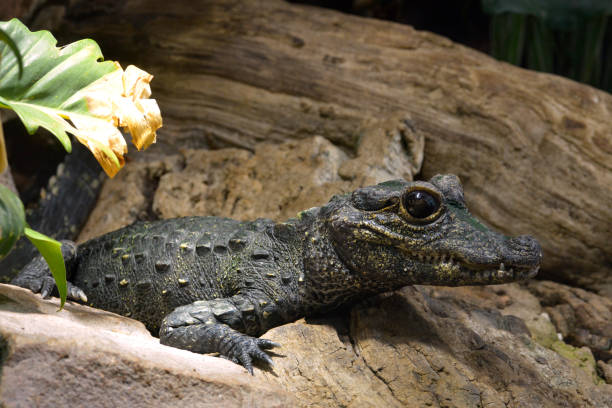
Reproduction and life cycle
Dwarf crocodiles engage in reproduction during the rainy season, typically from June to October. Males attract mates through low-pitched drumlike vocalizations, and mating may involve competition between males for females. After mating, a female constructs a mound-shaped nest away from the water’s edge, depositing 10-20 fertilized eggs. She guards the nest and incubates the eggs for approximately three months until they hatch.
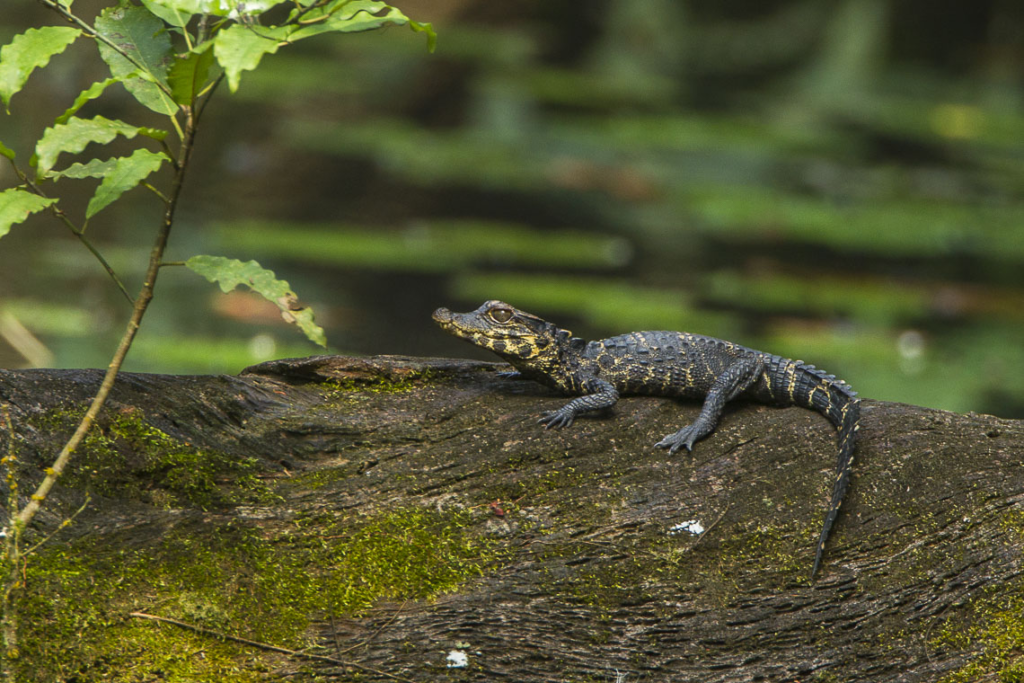
The nest, composed of fallen leaves and vegetational debris, provides a heat source for incubation. The mother responds to the calls of the hatched young, excavates the nest, and transports them to the water. Young dwarf crocodiles remain under the care of their mother (and possibly their father) before eventually dispersing. Sexual maturity is typically reached between ages 5 and 6, and some sources suggest that these crocodiles may live as long as 50-100 years in the wild.
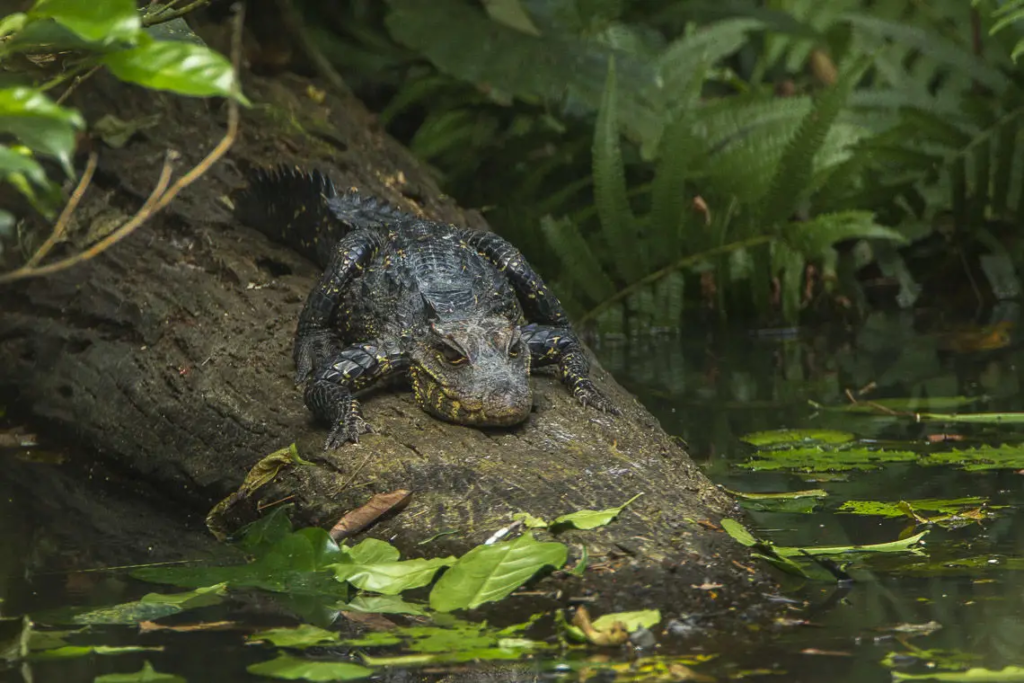
Conservation status
Despite their seemingly robust population estimates ranging from 25,000 to 100,000 individuals, the dwarf crocodile faces numerous threats, leading to its vulnerable status. Human activities, including hunting for hides and meat and the destruction of habitats through logging, oil palm cultivation, and expansion of grazing land, have taken a toll on local populations. Conservation efforts are crucial to ensure the survival of this unique species, and some individuals find refuge in zoos and ranches worldwide.
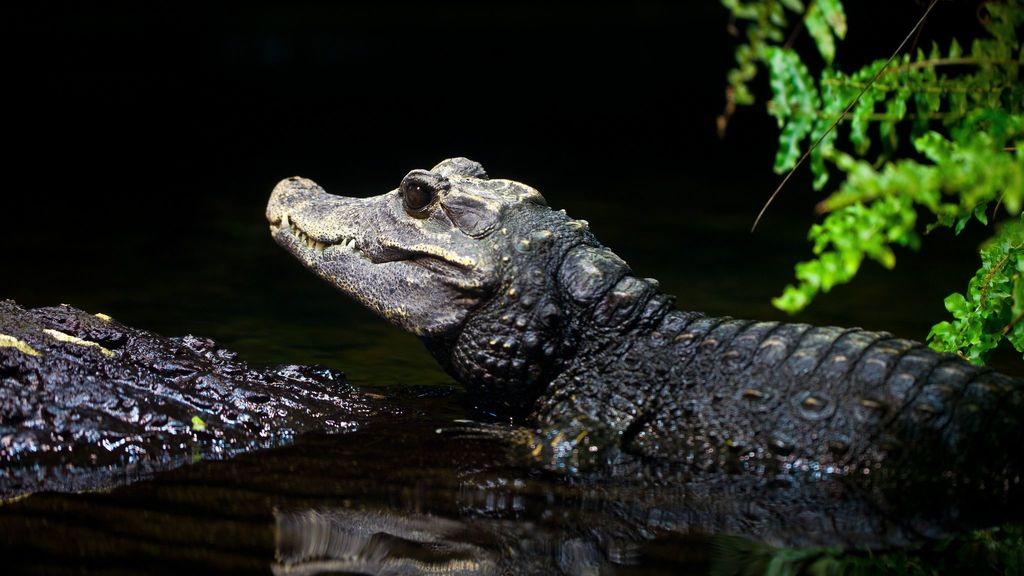
Conclusion
The dwarf crocodile, with its intriguing natural history and behavior, serves as a testament to the incredible diversity of life on our planet. As efforts to conserve and protect their habitats gain importance, it is our collective responsibility to ensure the continued existence of these fascinating reptiles and appreciate the vital role they play in the ecosystems of sub-Saharan Africa.
To explore more news : Click Here
ALSO READ : Prithviraj Chauhan : The Last Hindu Emperor Of Northern India – A Saga Of Resilience And Valor







